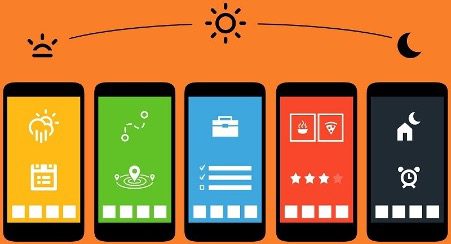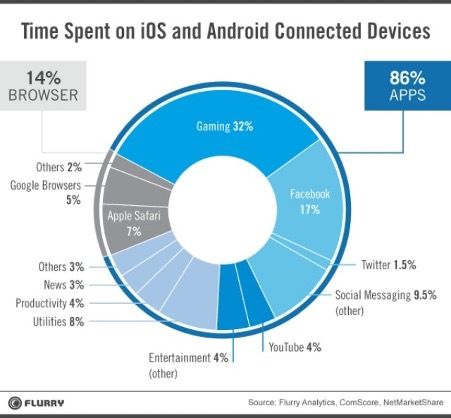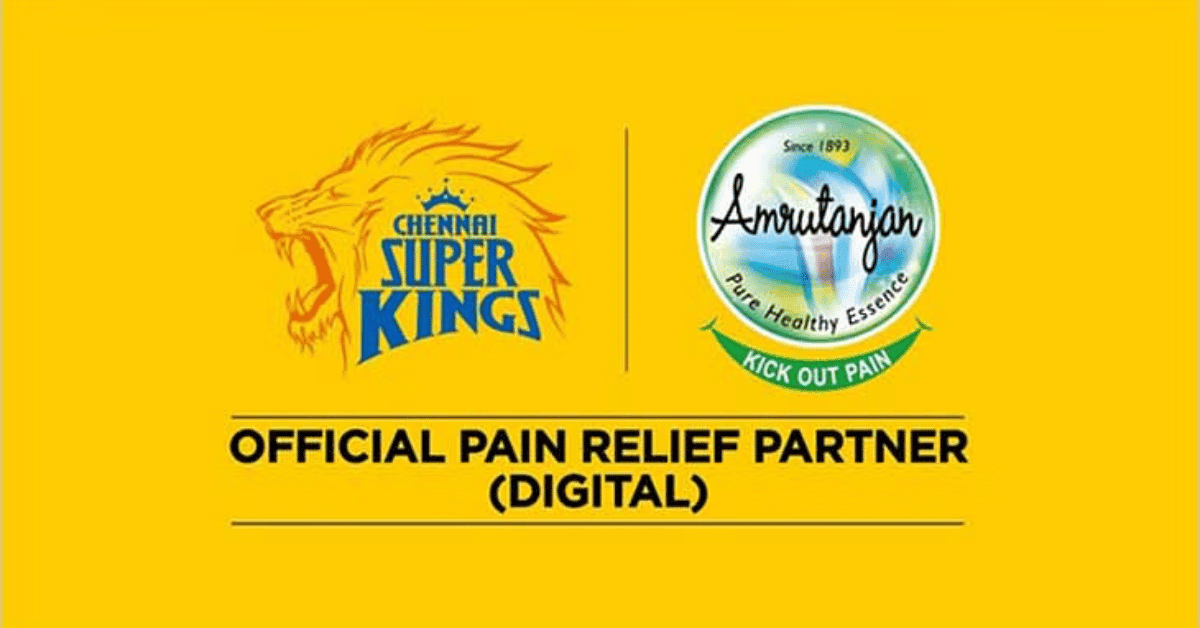So the mobile era is here—The number of mobile users today is greater than the number of desktop users!
Consequently, businesses have realized the need to effectively use mobile channels to attract customers. But, that’s not enough. They also need to optimize their mobile apps and websites to improve user experience and outdo their conversion rates so they can make the most of this channel.
While some businesses employ both mobile websites and apps, other companies might have to choose one of them. The choice between mobile apps and websites depends on their cost, usability, required features, and the audience they serve.
That being said, studies show that users prefer mobile apps more than mobile websites. This makes for a strong reason to create mobile apps for reaching out to potential (and existing) customers.
In addition, there are various other reasons that make mobile apps better than mobile websites.
Following is our list of the top 10:
#1 Mobile apps offer better personalization
Personalization is about offering tailored communication to users based on their interests, location, usage behavior, and more.
With mobile apps, it’s easy to treat users with a personalized experience. Using a mobile app A/B testing tool, you can also test out different experiences for your customers.
Mobile apps can let users set up their preferences at the start, based on which users can be served with customized content. Apps can also track and observe customer engagement, and use it to offer custom recommendations and updates to the users. Furthermore, they can also identify the location of the users in real-time to provide geography-specific content.

However, improving user experience is not the only purpose that personalization serves. It can also help improve the conversion rate of apps.
When users are pampered with personalized content, they have a higher chance of converting as it offers a human touch as opposed to generic content which comes across as rather robotic or automated.
#2 Ease of sending notifications
For the last couple of decades, email has been the most widely-used business communication tool. Businesses have extensively used email (some almost abused it) to reach out to their users. As a result, email has lost the effectiveness it once had; its open rates and click rates have constantly dropped[1].
Well, there’s no reason to worry.
Enter mobile app notifications.
These notifications are of two types: push and in-app notifications. Both are exciting alternatives for communicating with app users in a far less intrusive manner.

The ability to send instant, non-intrusive notifications to users is so desired that it is one of the major reasons why many businesses want to have a mobile app in the first place.
In-app notifications are the notifications that users can only receive when they have opened an app. Push notifications, on the other hand, are those notifications that users can receive regardless of any activity they are doing on their mobile device.
There have been instances where the push medium of notifications has delivered click-through rates of 40%. In case you chose to stick with a mobile website or are running one while building an app, you can send your push notifications with VWO Engage.
Sign up for a free trial and see how easy it is to send notifications to both desktop and mobile users.
#3 Making use of mobile device features
Mobile apps have the advantage of utilizing features of a mobile device like camera, contact list, GPS, phone calls, accelerometer, compass, etc.

Such device features, when used within an app, can make the user experience interactive and fun.
Moreover, these features can also reduce the efforts users would have to make otherwise. For instance, users completing a form on a banking app might need to submit their photograph for completion of the process. The app can let users take the help of the camera of their mobile device to capture and submit a photograph.
The device features can significantly shorten the time users take to perform a certain task in an app, and can even boost conversions.
Note: Mobile websites can also use some features of a mobile device like camera, GPS, etc. Still, there are technological constraints and privacy concerns in utilizing multimedia features of a device (which mobile apps can use).
#4 Ability to work offline
It is probably the most fundamental difference between a mobile website and an app.
Although apps too might require internet connectivity to perform most of their tasks, they can still offer basic content and functionality to users in offline mode.
Let’s take the example of a banking app again.
The app can provide features like tax calculation, installment calculation, and determination of loan limits. These features can work even without the help of an internet connection.
Note: Even though mobile websites can use caching to load web pages without an internet connection, they can only offer limited functions.
#5 Freedom in designing
Even with all the technological advancements in web designing, mobile websites have to rely a lot on browsers to perform even the most elementary functions. Mobile websites depend on browser features like ‘back button,’ ‘refresh button,’ and ‘address bar’ to work.
Mobile apps don’t have any of these restrictions.
A mobile app can be designed with a lot of elaborate functions, based on advanced gestures like ‘tap,’ ‘swipe,’ ‘drag,’ ‘pinch,’ ‘hold,’ and more.

Apps can use these gestures to offer innovative functionality that can help users perform a task better. For example, an app can let users move to a next or previous step using the swipe gesture.
#6 New branding experience
Since a mobile app is distinct from a company’s website, it has the liberty of offering a new brand experience to users. It means that the company can experiment with new branding styles for the app, which can be different from the regular brand style of the company’s website (or the company altogether).
Going a step further, companies can build mobile apps specifically to transition into a new brand style for themselves.
Additionally, a mobile app can also allow users to customize its appearance, as per users’ liking. This can further help on the personalization front of the app.
Note: The concept of microsites works on similar lines. Microsites offer a distinct brand experience to users, as compared to their parent sites. They are often used to promote a sub-brand, an event, or a newly-launched service.
Related post: A Cheat Sheet on Using Microsites to Build Traffic
#7 Users spend more time on Apps
Mobile users spend 86% of their time[2] on mobile apps and just 14% of the time on mobile websites.

Moreover, a study by eMarketer concluded that users spend more than 90% of their mobile time on apps as opposed to mobile web.
Note: A point to consider here is that users spend a majority of their time on gaming apps and social media apps.
Note: We also don’t have data telling us which mobile websites users visit more often (out of the 14% of their time mentioned above). Hence, it’s not possible to make a comparison.
#8 New stream of conversions
If you’re looking to increase conversions, mobile apps can be a great medium to push users down the conversion funnel.
Mobile apps can be used to acquire both top-of-the-funnel (ToFu) and bottom-of-the-funnel (BoFu) users.
For instance, utility apps can bring-in ToFu users, which can be later nurtured into BoFu leads. On the other hand, apps like eCommerce already have BoFu users, who have a higher possibility of converting.
Add-on: Since mobile apps are much more targeted in nature (through their content and utility), they can be used to tap specific users in the funnel. Mobile websites, in contrast, reach out to a diverse set of audiences.
#9 Brand presence
Users spend a substantial amount of their time on mobile devices. It’s safe to say that many of the users encounter the apps they’ve installed on their devices, almost every day. This regular encounter can be viewed as a branding opportunity for the apps[3].
Even when users are not actively using a mobile app, they are still reminded of the brand associated with the app. The icon of the app acts like a mini-advertisement for the brand.
The presence of an app on a users’ device helps influence user’s perception about a brand, subconsciously.

This user behavior can be linked to the Signal Detection Theory, which suggests that users process even those ads which they’ve ignored at some level in their minds.
#10 Apps can work faster than websites
A well-designed mobile app can perform actions much quicker than a mobile website.
Apps usually store their data locally on mobile devices, in contrast to websites that generally use web servers. For this reason, data retrieval happens swiftly in mobile apps.
Apps can further save users’ time by storing their preferences, and using them to take proactive actions on users’ behalf.
There is also a technical justification as to why mobile apps can work faster—Mobile websites use javascript code to perform most of their functions and the framework that mobile apps use can run almost five times faster than a javascript code! While all this happens in the background, users get to complete actions quicker on the front-end of mobile apps, again contributing to a delightful user experience.
Mobile app v/s mobile site—what should you choose?
Developing both mobile website and mobile app for your business can prove to be a costly affair and you may have to choose one of the two channels, based on your budget and business goals. While both channels have their own pros and cons, mobile apps, especially, can help you get higher conversions and retention. Mobile apps offer greater personalization and operational efficiency, along with multiple other exclusive features.
However, once you’ve designed a slick mobile app, how do you ensure it also delivers on all its promises and drives the intended growth for your business as opposed to being just another channel that you have to manage and maintain? Well, the answer is simple – you test it rigorously.
Mobile app A/B testing allows you to steadily enhance your in-app user experience by experimenting with features, app flows, and other UI-based changes to improve your engagement, conversion, and retention rate. Therefore, while having an up and running mobile app is definitely the first step towards engaging with a whole new audience segment, optimizing it continuously will help you drive tangible improvements in your key business metrics. VWO Mobile App Testing is a robust mobile experimentation platform that empowers you to build engaging experiences that delight users as well as launch world-class features by mitigating any risk. If you’re unsure how, request a free demo by one of VWO’s experimentation experts to understand how you can leverage VWO Mobile App Testing to improve your app’s key metrics.




















